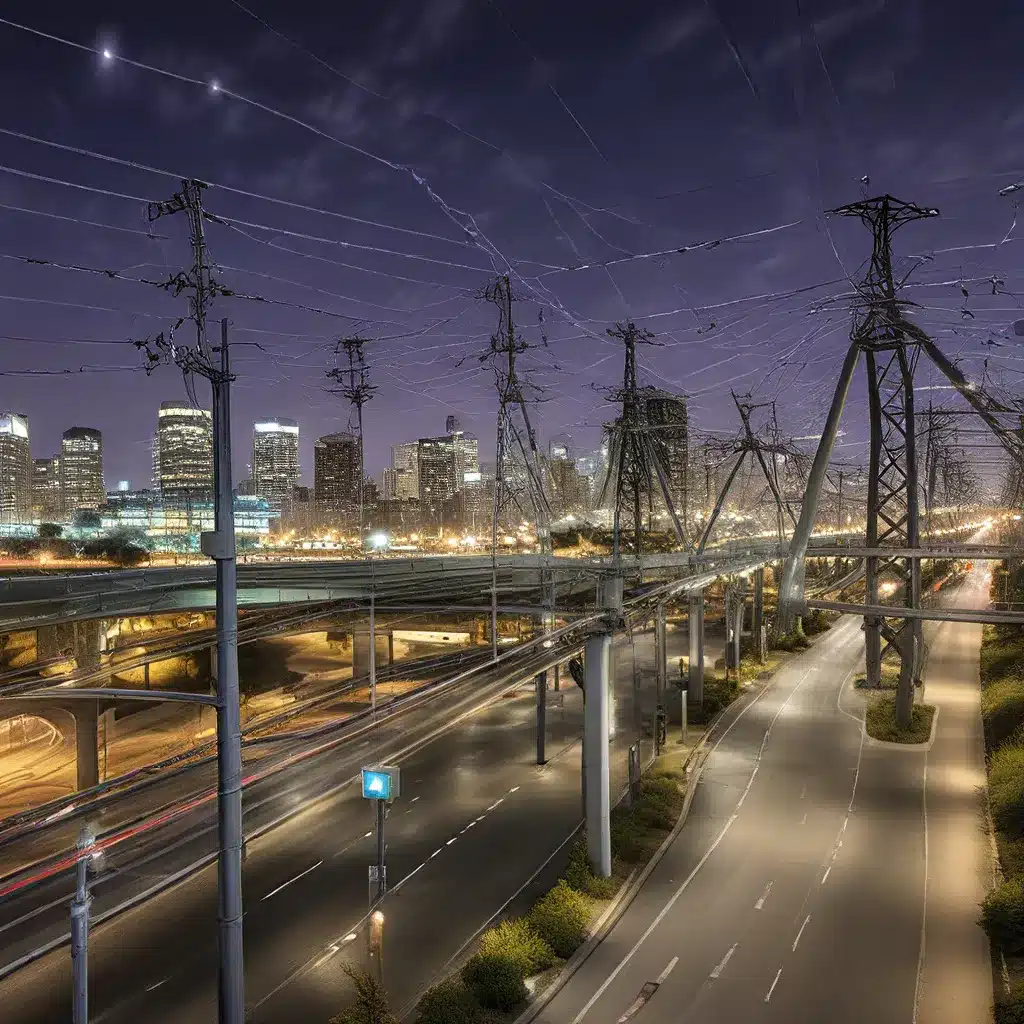
The Convergence of Sensor Networks and Energy Efficiency
As the world rapidly embraces the Internet of Things (IoT) and the widespread deployment of sensor networks, the need for efficient energy management has become increasingly crucial. Sensor networks are the backbone of IoT, enabling the collection and analysis of vast amounts of data from the physical world. However, the energy consumption of these sensor-driven systems is a significant challenge that must be addressed to unlock the full potential of this transformative technology.
In this article, we will explore the innovative approaches to energy management in sensor networks, delving into the latest trends, technologies, and best practices that are shaping the future of this dynamic landscape. From the integration of artificial intelligence (AI) and cloud computing to the rise of energy prosumers and the role of blockchain, we will uncover the strategies that are redefining the way sensor networks are powered and optimized.
Embracing the AI-IoT Convergence
The fusion of AI and IoT is a game-changer in the realm of sensor network energy management. By leveraging the power of machine learning and deep learning algorithms, sensor-driven systems can now optimize energy consumption, predict equipment failures, and make real-time adjustments to energy usage.
Recent research has highlighted the remarkable potential of this convergence, showcasing how AI-powered IoT solutions can analyze sensor data, identify patterns, and make intelligent decisions to enhance energy efficiency. For example, predictive maintenance algorithms can forecast equipment breakdowns, enabling proactive maintenance and avoiding costly unplanned downtime, which can significantly impact energy consumption.
Moreover, AI-driven load forecasting and energy optimization algorithms can help sensor networks dynamically adjust their energy usage based on real-time demand, ensuring that power is allocated efficiently and reducing overall energy consumption. This synergy between AI and IoT is a powerful enabler for the future of sustainable sensor network operations.
The Rise of Energy Prosumers
Another transformative trend in the sensor network landscape is the emergence of energy prosumers. Prosumers are not just consumers of energy but also producers of their own renewable energy, capable of covering a portion of their power needs and even selling the excess back to the local grid.
This decentralized energy model is made possible by the proliferation of distributed energy resources (DERs), such as solar panels, wind turbines, and energy storage systems, which are often integrated into sensor-driven IoT applications. By empowering prosumers, sensor networks can become more self-sufficient, resilient, and environmentally friendly.
Data from the research shows that prosumers can be found across various sectors, including residential, commercial, public institutions, and industrial settings. This diversification of energy producers is a key driver in the transformation of the traditional energy landscape, with sensor networks playing a central role in enabling this shift.
Drones and Digital Twins: Transforming Energy Infrastructure Monitoring
Sensor networks are also revolutionizing the way energy infrastructure is monitored and maintained, with the help of innovative technologies like drones and digital twins.
Self-piloted drones equipped with sensors and cameras can inspect miles of pipelines, track construction progress, and assist in precision agriculture, all while reducing the need for manual, time-consuming, and potentially dangerous inspections. Research has shown that this aerial monitoring can significantly enhance the reliability, efficiency, and safety of energy infrastructure, ultimately contributing to better energy management.
In parallel, the rise of digital twin technology is transforming the way sensor networks are designed and optimized. By creating virtual replicas of physical assets, digital twins can simulate the behavior of sensor-driven systems, allowing for predictive maintenance, failure prevention, and energy optimization. Studies have demonstrated that this technology can reduce downtime, improve asset utilization, and enhance energy efficiency across various energy sectors.
Unlocking the Potential of Cloud and Blockchain
The integration of cloud computing and blockchain technology is further amplifying the impact of sensor networks in the energy sector.
Cloud-based platforms can enable the predictive maintenance of energy assets, optimizing scheduling and automatically managing backups to minimize downtime and reduce energy consumption. Research has shown that this approach can lead to increased efficiency and lower costs for energy providers and consumers alike.
Moreover, blockchain technology is introducing new possibilities for transparent and efficient energy trading within sensor network ecosystems. By recording the source and carbon footprint of renewable energy generation, blockchain can facilitate peer-to-peer energy trading and enable decentralized energy markets. Successful pilot projects have demonstrated the potential of blockchain in enhancing the integration of renewable energy and optimizing energy distribution across sensor network-powered grids.
Harnessing AI and Analytics for Improved Energy Forecasting
The integration of advanced analytics and AI is revolutionizing energy forecasting and resource allocation within sensor networks. Research has shown that AI-powered weather models, combined with historical data and real-time sensor inputs, can provide highly accurate solar and wind power forecasts, leading to improved renewable energy integration and reduced energy costs.
By leveraging the predictive capabilities of AI, sensor networks can harmonize the provision of fossil fuel and renewable energy, ensuring a balanced and efficient energy supply. This can result in increased efficiency, lower costs, and reduced environmental impact, ultimately contributing to the sustainability of sensor network-driven ecosystems.
Conclusion: Powering the Future of Sensor Networks
The advancements in energy management for sensor networks are truly transformative, reshaping the way we power, monitor, and optimize these innovative technologies. From the convergence of AI and IoT to the rise of energy prosumers and the integration of cloud, blockchain, and advanced analytics, the sensor network landscape is experiencing a profound shift towards a more sustainable, efficient, and intelligent future.
As we continue to explore the boundless potential of sensor networks and IoT, the emphasis on innovative energy management will be crucial in unlocking their full capabilities and driving the transformation of industries, communities, and the world at large. The future is indeed powered by the strategic, energy-efficient design of sensor networks, paving the way for a more sustainable and technologically advanced tomorrow.